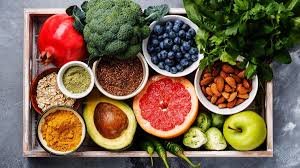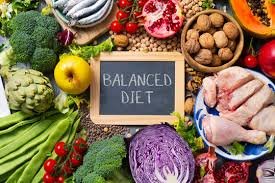A nutritious diet is fundamental for maintaining overall health and well-being. Here are key components and practical tips to help you achieve a balanced and nutritious diet:
1. Understanding Nutrients

- Macronutrients: Include carbohydrates, proteins, and fats, which provide energy and are essential for growth and bodily functions.
- Carbohydrates: Choose whole grains, fruits, and vegetables over refined grains and sugars.
- Proteins: Incorporate lean meats, fish, eggs, dairy, legumes, nuts, and seeds.
- Fats: Opt for healthy fats from sources like avocados, nuts, seeds, olive oil, and fatty fish.
- Micronutrients: Include vitamins and minerals that support various bodily functions.
- Vitamins: Ensure you get a variety of vitamins (A, B, C, D, E, K) from diverse food sources.
- Minerals: Important minerals include calcium, potassium, iron, magnesium, and zinc.
2. Balanced Diet Tips



- Eat a Variety of Foods: Incorporate a wide range of foods from all food groups to ensure you get all necessary nutrients.
- Portion Control: Be mindful of portion sizes to avoid overeating and manage calorie intake.
- Hydration: Drink plenty of water throughout the day to stay hydrated and support bodily functions.
- Limit Processed Foods: Reduce intake of processed and sugary foods that offer little nutritional value.
3. Meal Planning and Preparation




- Plan Your Meals: Create weekly meal plans to ensure a balanced diet and avoid last-minute unhealthy choices.
- Healthy Snacks: Keep nutritious snacks like fruits, nuts, and yogurt on hand to curb hunger between meals.
- Cooking Methods: Choose healthier cooking methods like baking, steaming, grilling, and sautéing over frying.
4. Incorporating Superfoods




- Leafy Greens: Spinach, kale, and Swiss chard are rich in vitamins, minerals, and antioxidants.
- Berries: Blueberries, strawberries, and raspberries are packed with vitamins, fiber, and antioxidants.
- Nuts and Seeds: Almonds, chia seeds, and flaxseeds provide healthy fats, protein, and fiber.
- Whole Grains: Quinoa, brown rice, and oats are excellent sources of complex carbohydrates and fiber.
- Fish: Salmon, mackerel, and sardines are rich in omega-3 fatty acids, which are beneficial for heart health.
5. Practical Tips for a Nutritious Diet


- Read Labels: Check food labels for nutritional information and avoid items high in added sugars, sodium, and unhealthy fats.
- Moderation: Enjoy your favorite treats in moderation rather than eliminating them entirely.
- Mindful Eating: Practice mindful eating by paying attention to hunger and fullness cues and savoring your meals without distractions.
Sample Meal Plan


Breakfast:
- Greek yogurt with honey, mixed berries, and a sprinkle of granola.
- Whole-grain toast with avocado and a poached egg.
Lunch:
- Grilled chicken salad with mixed greens, cherry tomatoes, cucumbers, and a vinaigrette dressing.
- Quinoa and black bean bowl with roasted vegetables.
Snack:
- Apple slices with almond butter.
- Carrot sticks with hummus.
Dinner:
- Baked salmon with a side of steamed broccoli and brown rice.
- Lentil soup with a mixed green salad.
Dessert:
- Fresh fruit salad.
- Dark chocolate square.
Conclusion
A nutritious diet is about making balanced and informed choices that support your overall health. By incorporating a variety of foods, practicing portion control, and staying hydrated, you can enjoy a diet that not only meets your nutritional needs but also supports a healthy lifestyle. Remember, small, sustainable changes over time can lead to significant improvements in your health and well-being.




